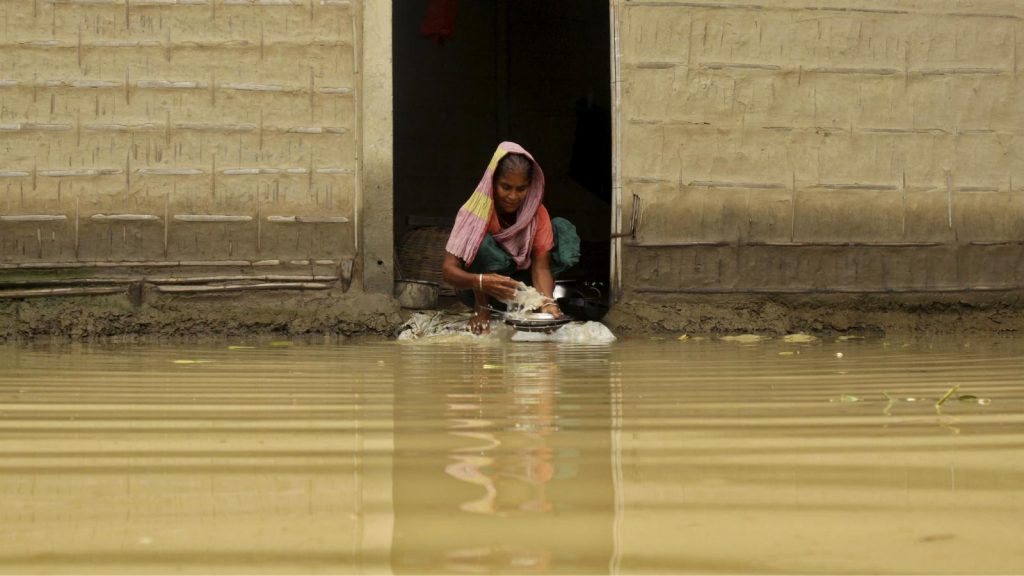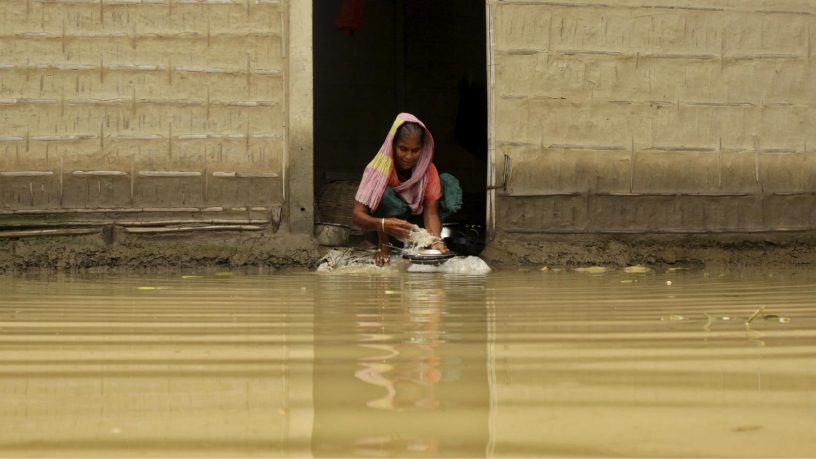
Using examples from 2012–2013 floods in Assam, this paper provides a bottom-up perspective on innovations and technologies deployed by external aid agencies.
Authors
Sneha Krishnan, Associate Professor, Jindal School of Environment & Sustainability
Summary
This paper develops a theoretical understanding of learning during recovery from recurring disasters when humanitarian organizations deploy WASH technologies using examples from 2012–2013 floods in Assam, Northeastern India.
A mixed methods study was conducted in Assam, where Oxfam had responded after 2012 floods and erosion. Two surveys (n1 = 313; and n2 = 279) in 2013, along with 38 semi-structured interviews, 18 household interviews and 23 focus group discussions (FGDs) were undertaken. The quantitative data were analysed using descriptive statistics and the qualitative data were interpreted thematically.
One of the product-level innovations included raised platforms with WASH facilities as a preparedness measure for future floods, enabled by a co-learning approach. Social learning within community members provided contextual inputs, while Oxfam learnt through its institutionalized learning mechanisms, namely real-time evaluations, knowledge, attitude and practice (KAP) surveys and strong monitoring mechanisms. Despite these measures, the precarity of such geographies remains a major concern in increasing vulnerability, and hence this study advocates for an approach towards innovation that equally emphasizes and advances learning within community groups as well as organizations so that lessons can be captured and revisited in future programmes and promote wider application.
This study is exploratory, and longitudinal in nature, although the data and findings are fairly representative of the target population, they do not imply causality and attribution. Since the study relies on a case study, there are limitations of how the findings could be generalized in other similar contexts.
This paper offers a new theoretical lens emphasizing context-specific understanding of short-term but rapid onset and cyclical emergencies resulting in local population displacement. It provides a bottom-up perspective on innovations and technologies deployed by external aid agencies as a commentary on recovery of community resilience from recurring disasters.
This paper reframes agency approaches in how they perceive community resilience and enable flood-affected and displaced communities to recover using innovations in WASH technologies.
This paper expands on the key lessons to be gleamed from the many interventions in humanitarian WASH technologies from learning perspective and benefits from reflections as a practitioner in the field.
Published in: Disaster Prevention and Management
To read the complete article, please click here


